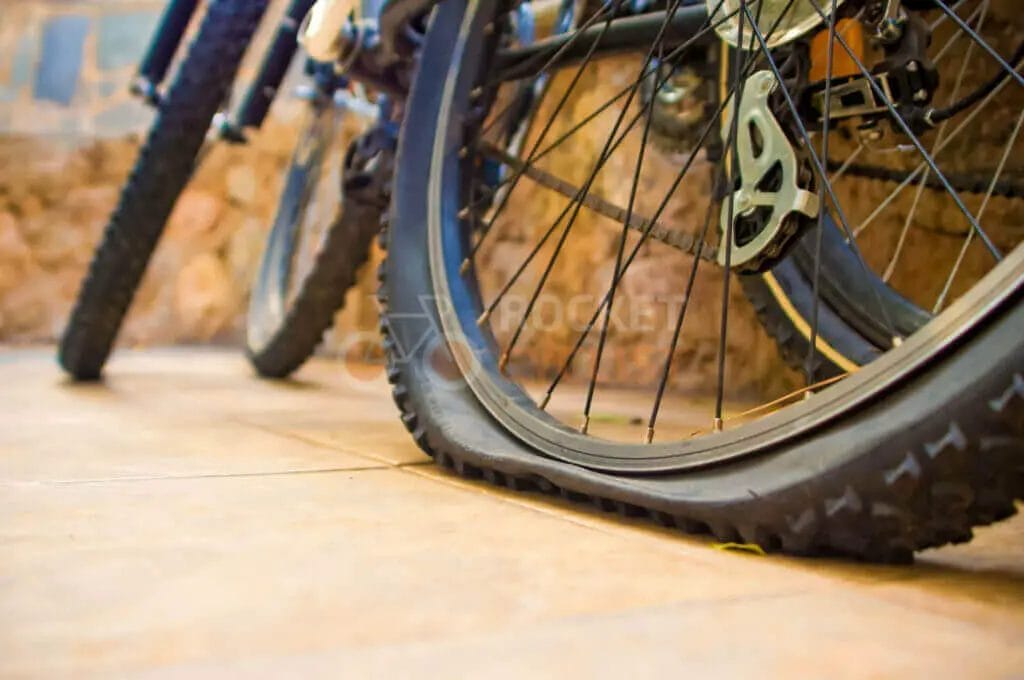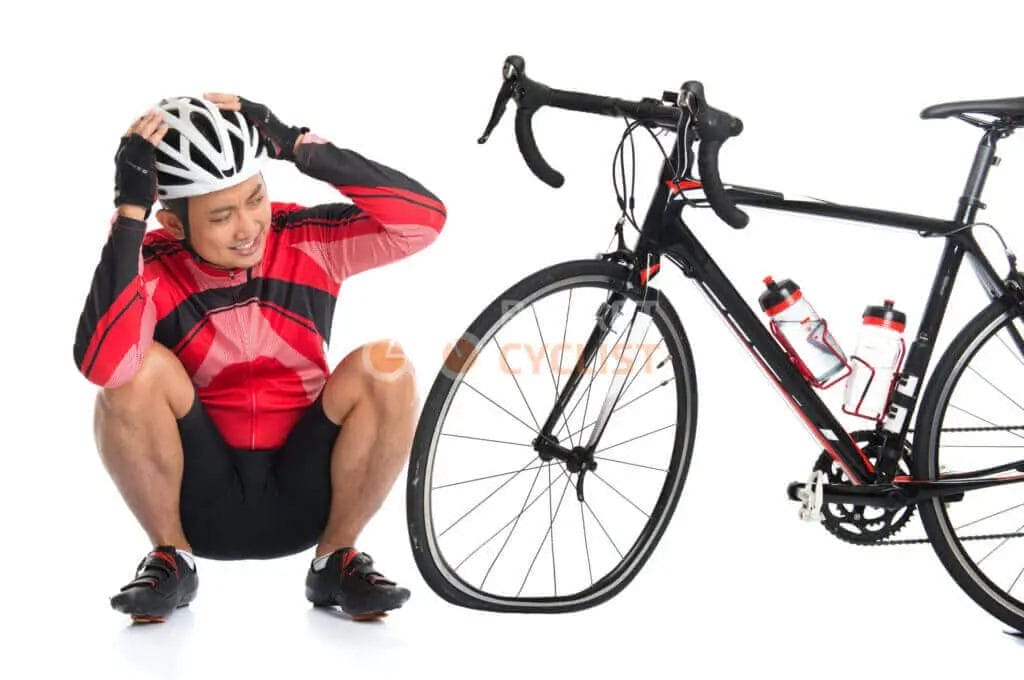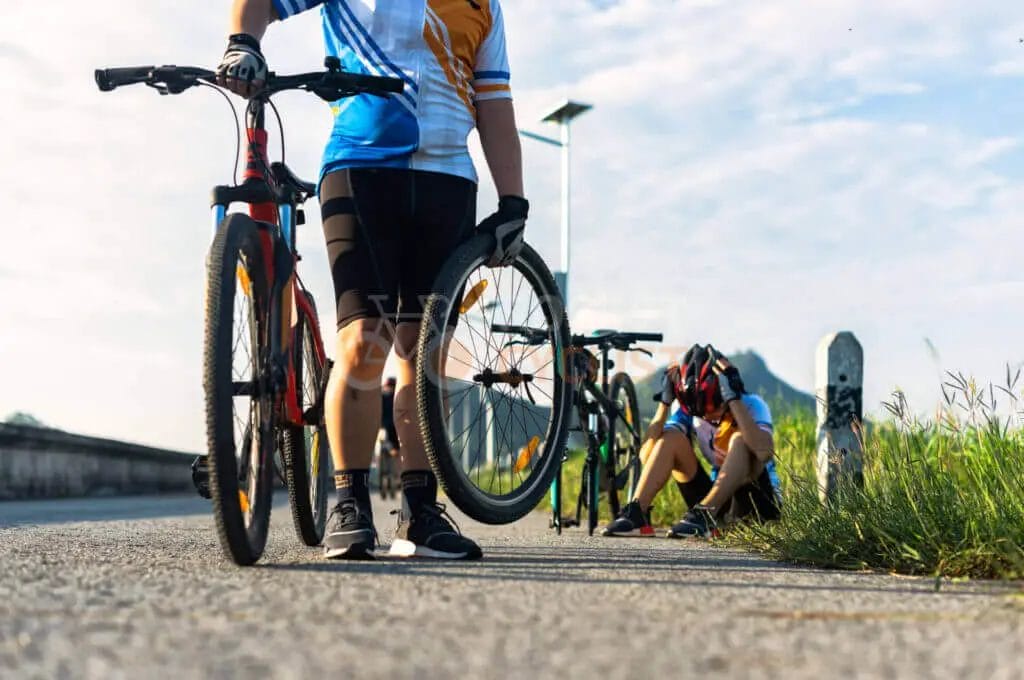Last Updated on September 28, 2024 by Vinson Lozano

Bicycle tires are crucial for a smooth and enjoyable riding experience, but encountering a tire that won’t inflate can be frustrating for any cyclist. Understanding the various reasons behind a flat bicycle tire, including issues like a bike tire that won’t hold air, a malfunctioning bicycle pump, or air leakage in the bike tube, can help you tackle these common challenges. This article delves into the main causes of these inflation problems and offers insights into effective solutions to keep your bike in optimal condition.
Key Takeaways
- Air Leakage: Common cause of flat tires due to holes or cracks in the inner tube.
- Faulty Valves: A defective valve can lead to air loss, making your bike tire struggle to hold air.
- Bicycle Pump Issues: Ensure your pump is functioning well before blaming the tire.
- Regular Maintenance: Routine checks can help prevent tire issues.
- Sealants: Using tire sealants can provide added protection against leaks and make inflation easier.
- Inner Tube Replacement: Sometimes, the best solution for persistent issues is replacing the inner tube.
Understanding Why Your Bicycle Tire Won’t Inflate

Common Causes of Flat Bicycle Tire Issues
One of the main reasons your bicycle tire won’t inflate could be an air leakage in the bike tube. This can occur due to various reasons, such as punctures, wear and tear, or even poor valve seals. When you pump air into a tire and find it deflates quickly, it’s essential to inspect the tube for any visible defects. Look for small holes, damaged seams, or worn areas that might cause air to escape.
Checking for Punctures
To properly check for punctures, remove the tire and inner tube. Submerge the tube in water or use soapy water to identify the source of the air leakage by looking for bubbles. This method is effective for detecting tiny punctures that might not be visible to the naked eye. If you find a puncture, you can use a patch kit or, if the damage is extensive, consider a bike inner tube replacement.
Faulty Bicycle Valves
A faulty bicycle valve could be another significant factor contributing to inflating bike tire problems. The valve is responsible for letting air in and keeping it sealed, so if it’s defective, you may struggle to inflate your tires effectively.
Types of Bicycle Valves
There are mainly two types of valves — Schrader and Presta. If you’re using a Schrader valve and it’s leaking, it may need to be replaced or adjusted. On the other hand, if you’re dealing with a Presta valve, ensure the valve core is tight and the valve itself isn’t damaged.
Functional Bicycle Pump Issues
If you’re dealing with a situation where your bicycle pump is not working correctly, it could lead to frustration. Before assuming the tire is the problem, always check your pump. A pump that doesn’t build pressure effectively might give you the impression that the tire won’t inflate.
Troubleshooting Your Pump
Make sure all connections are secure and check for blockages or leaks. If your pump has a gauge, check that it indicates pressure accurately. Sometimes, simply cleaning the attachment head or ensuring proper sealing with the valve can resolve the issue.
Maintenance Tips for Bicycle Tires
Preventive maintenance is key to avoiding flat bicycle tire issues. Regularly inspect your tires for wear, and ensure they are properly inflated and free from debris that could cause punctures.
Regular Checks
Make it a habit to check tire pressure weekly, particularly before long rides or during changes in temperature, which can affect tire pressure. Use the recommended PSI listed on the tire to ensure optimal performance.
Using Tire Sealants
Incorporating tire sealants into your bicycle maintenance routine can mitigate risks associated with flat tires. These sealants work by sealing small punctures as they happen, greatly reducing the likelihood of a bike tire that won’t hold air.
Understanding Air Leakage in Bike Tubes
Air leakage can often be overlooked, but it’s essential to understand how the tubes function. Over time, tube materials can degrade or become porous, leading to slow air leaks known as “slow leaks.”
Addressing Air Leakage
If you suspect there’s an issue with the air retention of your bike tubes, consider inspecting and, if necessary, replacing them. Additionally, always ensure that tires are properly mounted on the rims during installation, as poor placement can lead to leaks.
Common Bike Inflation Problems and Solutions

Dealing with Persistent Flat Tires
For many cyclists, the battle with flat tires can feel relentless. If you discover that your tire keeps going flat despite efforts to repair or replace the inner tube, it’s time to dig deeper.
Check Rim Condition
Examine your rim for sharp edges, burrs, or any damage that could puncture the inner tube. A slightly rough rim can cause ongoing air leakage problems, so make sure the inside is smooth and clean.
Professional Assistance
If you’re still having trouble inflating bike tires after going through these troubleshooting steps, don’t hesitate to seek help from a professional bike shop. They can provide insights that might be overlooked and ensure your bicycle is road-ready.
Conclusion
In summary, encountering a bicycle tire that won’t inflate can be a hassle, but understanding the common reasons behind these issues—from air leakage to faulty valves—can mitigate potential frustrations. By adhering to proper maintenance practices and promptly addressing issues like a bike tire that won’t hold air, you can enhance your cycling experience. Remember, regular checks and using effective solutions like tire sealants can go a long way in preventing inflation problems.
Do you have any experiences or tips related to biking and tire issues? Share your thoughts or questions in the comments below!
FAQs
- Why won’t my bicycle tire inflate?
It could be due to air leakage, a faulty valve, or issues with your pump. - How can I check for a puncture in my bike tire?
Submerge the inner tube in water or use soapy water to identify bubbles indicating a leak. - What should I do if my bike tire won’t hold air?
Inspect the inner tube for punctures and check the valve. If damaged, consider replacing them. - Can I repair a small puncture in my inner tube?
Yes, you can use a patch kit to repair small punctures effectively. - How often should I check my tire pressure?
Check your tire pressure weekly, especially before long rides. - What is the recommended pressure for my bike tires?
Refer to the PSI listed on the sidewall of your tires for optimal inflation levels. - Are tire sealants worth using?
Tire sealants can provide extra protection against small punctures and help maintain air pressure. - When should I replace my inner tube?
If the tube has multiple punctures or significant wear, it’s best to replace it. - What type of valve do I have on my bicycle?
Most bikes have either Schrader or Presta valves; you can identify them by their shape and size. - Is it safe to ride on a flat tire?
No, riding on a flat tire can damage the wheel and compromise safety. Make sure to fix it before riding.


